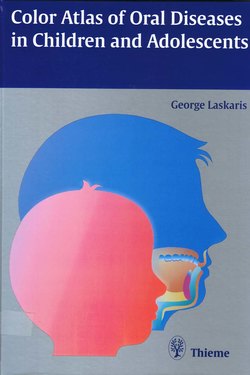Читать книгу Color Atlas of Oral Diseases in Children and Adolescents - George Laskaris - Страница 13
На сайте Литреса книга снята с продажи.
Оглавление4 Chemical Burns and Allergies
Chemical Burns
Definition
• Chemical burns are oral lesions caused by direct contact between various chemicals and drugs and the oral mucosa.
Etiology
• The chemicals come into direct contact with the oral mucosa because of improper use.
• Common chemicals and drugs that may be placed in the mouth include aspirin, trichloroacetic acid, sodium perborate, hydrogen peroxide, silver nitrate, phenol, paraformaldehyde, alcohol, battery acid, chlorine, and other detergents and agricultural drugs.
Occurrence in children
• Common.
Localization
• Lips, tongue, buccal mucosa, floor of the mouth, gingiva, vestibular sulcus.
Clinical features
• The extent and severity of the lesions depend on the kind of the caustic agent, its concentration, and the duration of the exposure.
• The lesions may be mild or severe, and they usually have similar clinical features.
• Clinically, the lesions present as white or erythematous wrinkled plaques, erosions or ulcerations, which are often covered by whitish pseudomembranes (Figs. 4.1–4.4).
• The use of the rubber dam has significantly reduced iatrogenic burns.
• The diagnosis is based on the history, the clinical features, and exclusion of other lesions or diseases.
Differential diagnosis
• Traumatic lesions
• Thermal burns
• Electric burn
• Erosions seen in lichen planus and bullous diseases
Treatment
• Symptomatic. The lesions usually disappear within a week on removal of the chemical or the drug.
• Topical and, rarely, systemic steroids in severe cases.
Fig. 4.1 Aspirin burn on the buccal mucosa and retromolar area
Fig. 4.2 Trichloroacetic acid burn on the lower labial mucosa
Fig. 4.3 Chlorine compound burn on the lower lip
Fig. 4.4 Severe and extensive erosions of the lips and tongue due to accidental contact with an agricultural compound
Angioneurotic Edema
Definition
• Angioneurotic edema is a relatively common diffuse allergic reaction of the soft tissues. The disorder may be hereditary (rare) or acquired (common).
Etioiogy
• The acquired form may be caused by local anesthetics, drugs, foods, infections, emotional stress, etc.
• The hereditary form is inherited as an autosomal dominant trait.
• The great majority of angioneurotic edemas are idiopathic.
Occurrence in children
• Relatively rare.
Localization
• Oral mucosa (lips, tongue, soft palate, buccal mucosa).
• Skin (face, hands, arms, legs, genitals).
• Respiratory and gastrointestinal tract occur mainly in the hereditary form.
Clinical features
• Acute, painless soft-tissue swelling, with a smooth, shiny surface (Fig. 4.5).
• The enlargement resolves within 24–72 hours.
• The swelling may be solitary or multiple, and the size be up to several centimeters in diameter.
• Edema of the epiglottis represents a severe complication that may result in death.
Differential diagnosis
• Glandular cheilitis
• Cheilitis granulomatosa
• Melkersson–Rosenthal syndrome
• Lymphedema
• Surgical emphysema
• Acute abscess of the soft tissues
• Traumatic swelling
Treatment
• Antihistamines, systemic corticosteroids.
• In severe cases, intramuscular epinephrine.
Fig. 4.5 Acquired form of angioneurotic edema on the lower lip
